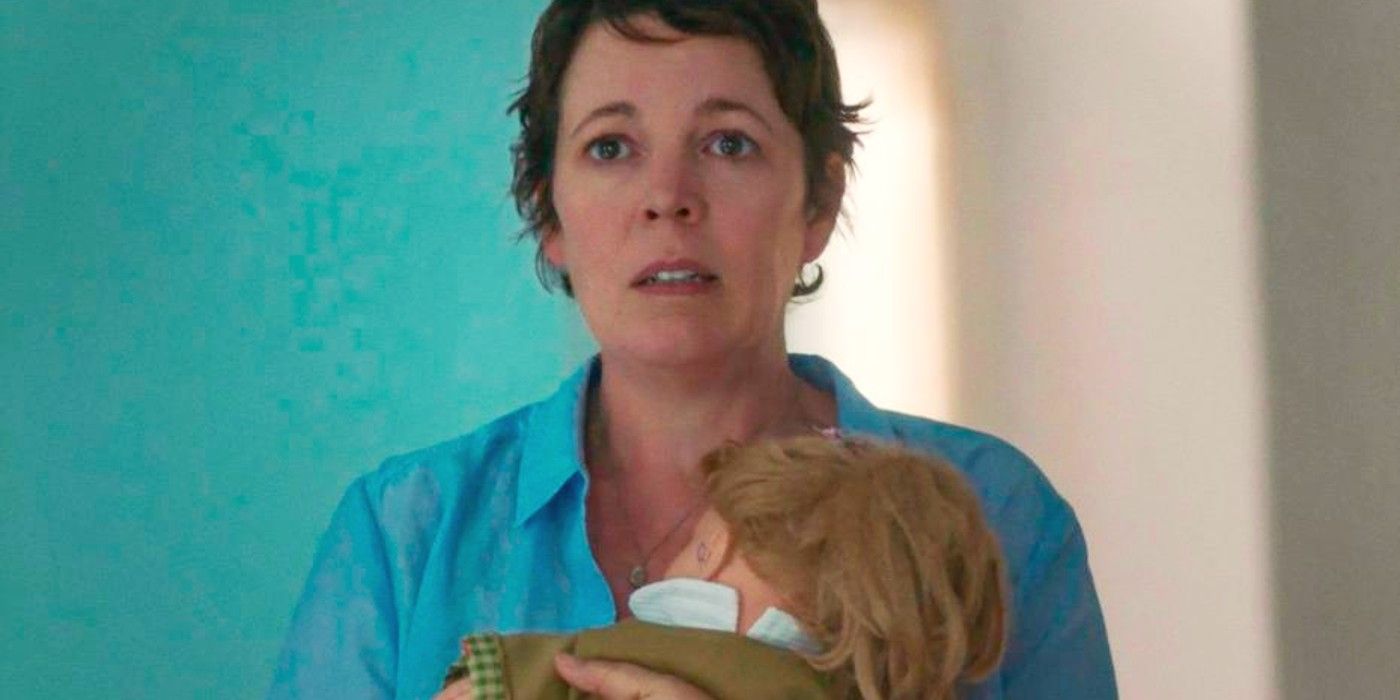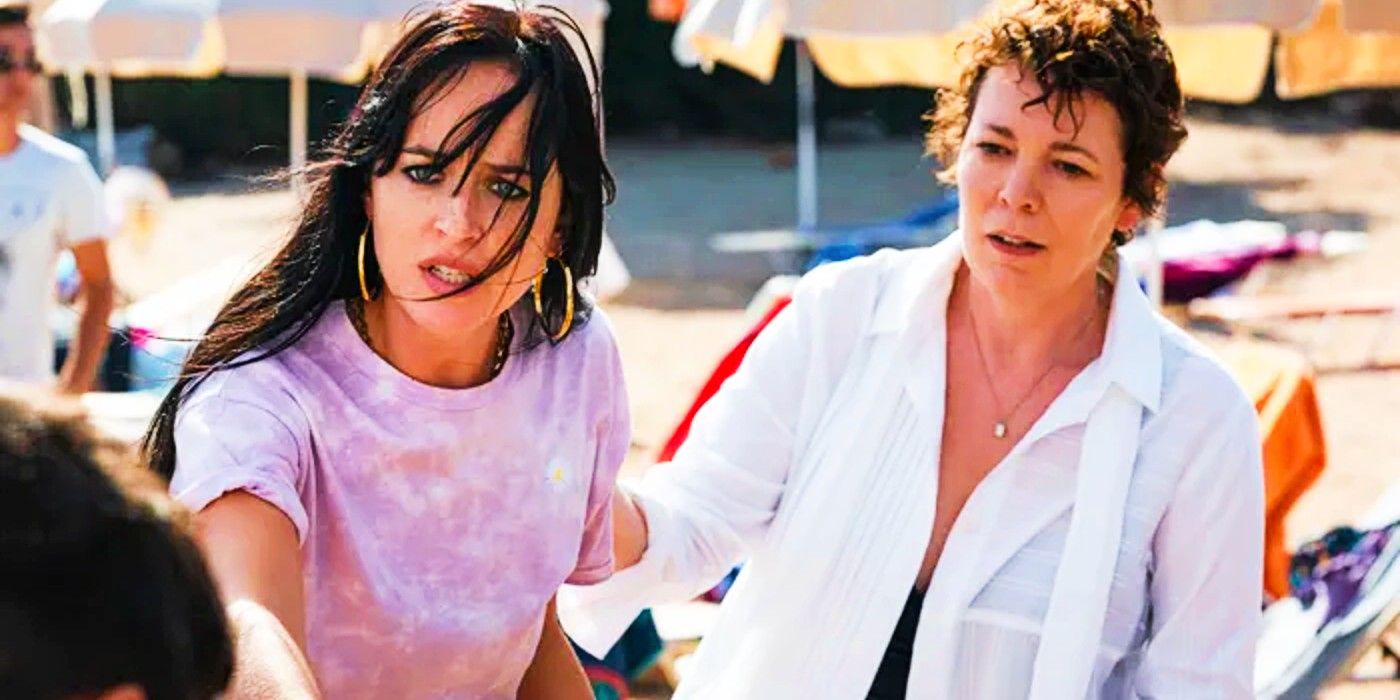The events of Maggie Gyllenhaal's directorial debut The Lost Daughter revolve around the stealing of a child's doll by a woman named Leda, and the reasons behind this theft only deepen the themes of the film. Debuting on Netflix at the end of December, The Lost Daughter follows The Crown actress Olivia Colman as Leda, a middle-aged woman on holiday alone in Italy. The idyllic holiday is interrupted by a boisterous and large family that bursts onto the beach that Leda is lounging on early in the film, and this interruption is deftly conveyed by Gyllenhaal's magnetic directing.
The Italian family that Leda encounters vacations in the same town every summer, as noted by Will, a man who works in the town while he is on break from school. Although Leda is annoyed by their presence at first, even refusing to move when they ask for her beach chair, she does take notice of one person in particular: Nina, played by Dakota Johnson, immediately grabs Leda's eye, not only for her apparent beauty but because she has a young daughter in tow named Elena. When Elena goes missing one afternoon on the beach, Leda is reminded of the time one of her own daughters went missing. Despite this connection, though, this doesn't stop Leda from stealing Elena's doll, something that deeply affects the young child and destabilizes the family. Still, Leda holds onto the doll throughout the film despite the fact that she knows the immense pain she is causing both Elena and Nina.
It seems that, even to Leda, her reasons for taking the doll remain a mystery. At one point, using flashbacks throughout the movie, (in which Leda is played by I'm Thinking Of Ending Things' Jessie Buckley), it seems that Gyllenhaal is hinting that Leda taking the doll has something to do with one she gave to her daughter when she was younger. When Leda gives the doll (named Mina) to her daughter, the child draws all over it, prompting Leda to throw it out the window where it shatters on the street. This seems to hint that Leda is taking it back as a way to reclaim her own lost doll — but it’s much deeper than that.
Many of the scenes of the past showing Leda as a mother are chaotic, punctuated by the screams and cries of her daughters, and Leda is clearly disoriented by this. In a way, the doll allows Leda to be a mother without all of the bad parts that she is so clearly traumatized by. Leda can take care of the doll, repair it and empty it of the water inside of it, without having to deal with it demanding her attention or taking away from her life in any major way. The doll allows Leda to feel like a good mother – something she never felt with her own children and something that the character of Callie (played by Succession's Dagmara Domińczyk) makes her feel.
The connection that Leda feels to Nina should also be considered here. By taking the doll, Leda is making Nina suffer and therefore making Nina need Leda in an almost motherly way. Given Nina’s age and unfamiliarity with Leda, Colman’s character is able to provide Nina with motherly emotional support without the added weight of being her actual mother. Leda needs to feel wanted, but only on her own terms, as evidenced by her affair with fellow academic Professor Hardy. Ultimately, Leda’s reasoning for taking the doll will remain unclear and that is largely the point of the film as a whole. The Lost Daughter and its ambiguous ending don't come with clear-cut answers or clearly laid out motivations. It is about the ways in which we are drawn to doing something -how society draws women into motherhood whether they want it or not; how the world draws people together who don’t necessarily belong together; and how people react to these situations with intention or some primal need that is undefinable.


